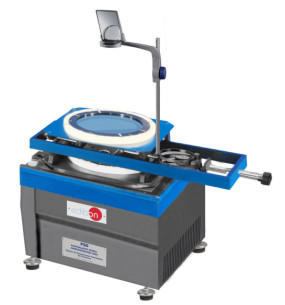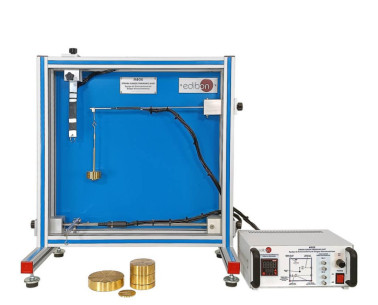EFO Photoelasticity Unit
INNOVATIVE SYSTEMS
Unit for photoelasticity practices, illustrating the subjects of the Photoelasticity theory, the Elasticity theory, Strength of Materials, and Structure theory.
Laboratories
RELATED NEWS
General Description
Unit for photoelasticity practices, illustrating the subjects of the Photoelasticity theory, the Elasticity theory, Strength of Materials, and Structure theory.
It is very suitable for the introduction and study of photoelasticity: optical elements, isochromatic, isoclinic, band order, band factor, edge tensionsing, etc.
Using this unit photoelastic experiments and practices of transparent test specimens (models) may be performed.
The different test specimens are subjected to loading by external forces and have poralised light shone through them.
A load application element can apply tensile, bending, compressive, and distributed and punctual loads to the specimen.
The stresses and strains occurring in the test specimen are represented as bright spots or figures of different colours, and we can visualise the distribution of stress.
We offer a wide range of test specimens for making a variety of practices and experiments.
These specimens show a full color and high contrast results and are also made of a special very hard material that avoids breaking during daily use.
Exercises and guided practices
GUIDED PRACTICAL EXERCISES INCLUDED IN THE MANUAL
- Introduction to photoelasticity: optical elements, isochromatic, isoclinic, band order, band factor, edge tension sign, etc.
- Determination of principal stress difference.<
- Isochromatics.
- Illustration of the themes about elasticity, strength of materials and structures using photoelastic tests.
- Pure traction/optical-tensional law.
- Diametrically compressed disc.
- Ring with diametrical compression traction.
- Ring with diametrical compression.
- Plate with circular drill with traction.
- Comparison of the effects from different engraves in piece with traction.
- Pure traction in a piece with section linearly variable.
- Pure flexion.
- Simple flexion.
- Simple flexion, compound beams.
- Compound flexion.
- Compound central core of the section.
- Piece with a great curvature subjected to flexion.
- Arch built-in with a central charge.
- Triangular structure.
- Comparison of the structures.
- Comparison of the effect of different notches.
- Tardy compensation method (requires EFO-ICL).
MORE PRACTICAL EXERCISES TO BE DONE WITH THE UNIT
- Several other exercises can be done and designed by the user.
SIMILAR UNITS AVAILABLE
Computer Controlled Photoelasticity Unit with Artificial Vision System
Photoelastic Stress Demonstration Unit
SUPPLEMENTARY EQUIPMENT
Computer Controlled Photoelasticity Unit
Computer Controlled Photoelasticity Unit with Artificial Vision System
Strain Gauge Training Unit
Unit for Determining the Gauge Factor of Strain Gauges
Photoelastic Stress Demonstration Unit
Quality

AFTER-SALES SERVICE

 Cookie preferences
Cookie preferences










